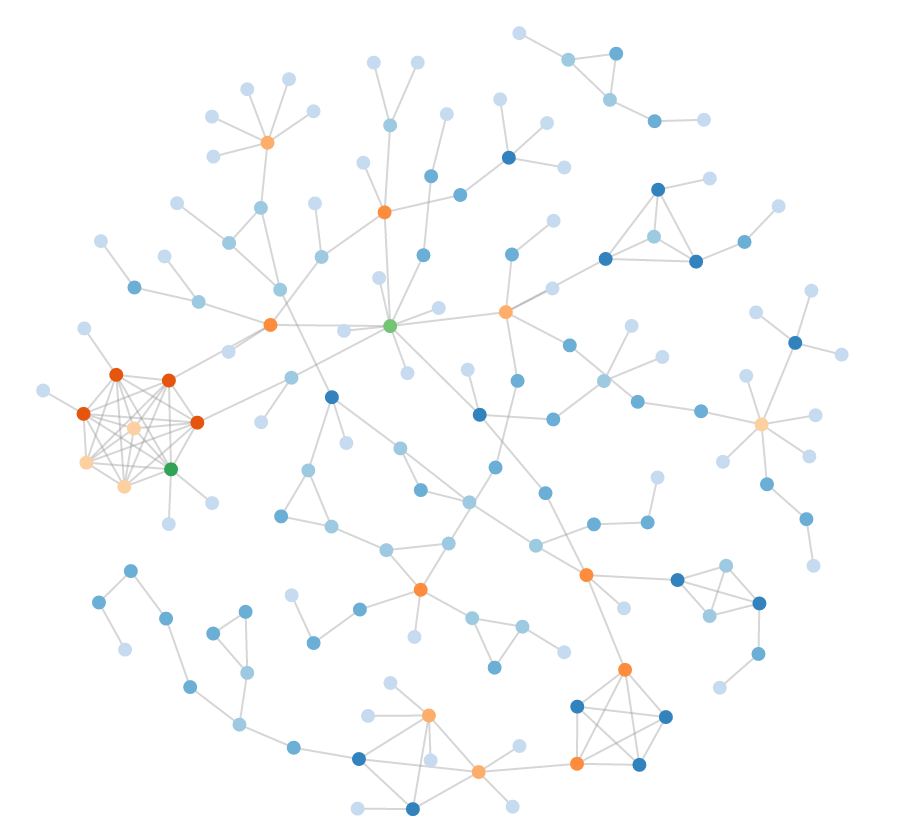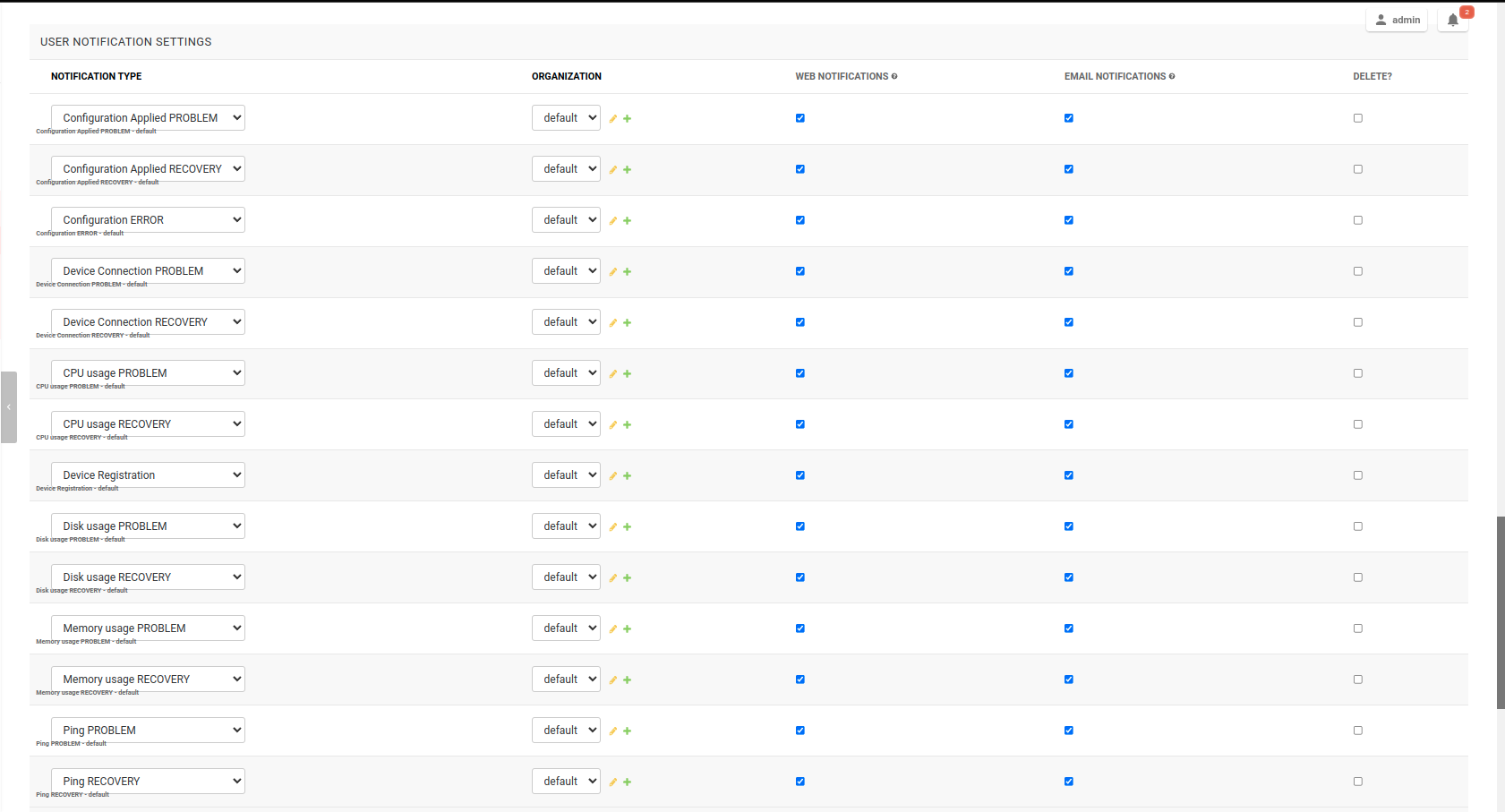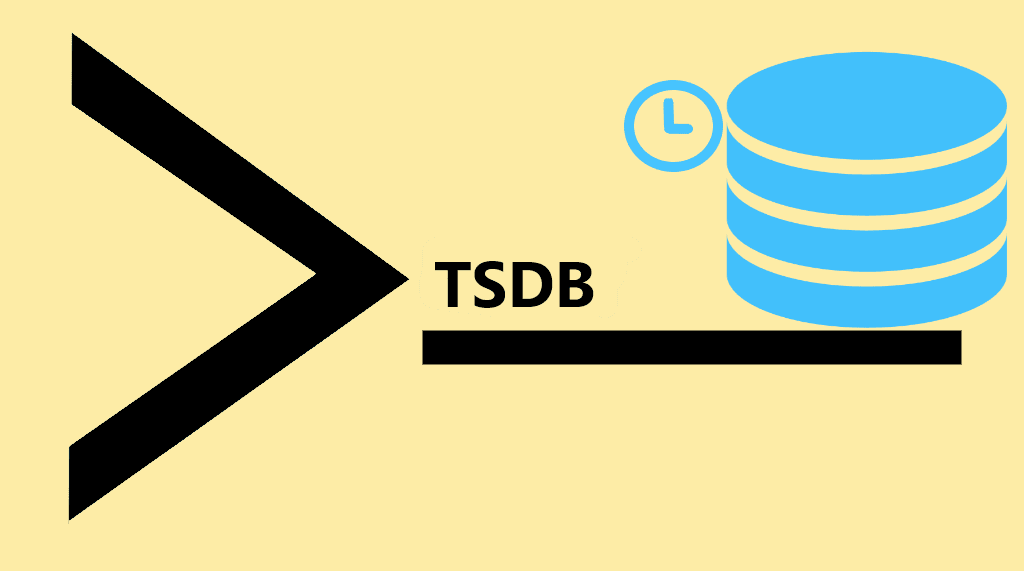GSoC Project Ideas 2024
Warning
This page is currently a work in progress and not final.
If you want to apply to GSoC 2024 with us please focus on contributing to OpenWISP before spending effort on any idea listed on this page, at least until the GSoC application period opens.
Tip
Do you want to apply with us?
We have a page that describes how to increase your chances of success. Please read it carefully.
General suggestions and warnings
Project ideas describe the goals we want to achieve but may miss details that have to be defined during the project: we expect applicants to do their own research, propose solutions and be ready to deal with uncertainty and solve challenges that will come up during the project
Code and prototypes are preferred over detailed documents and unreliable estimates: rather than using your time to write a very long application document, we suggest to invest in writing a prototype (which means the code may be thrown out entirely) which will help you understand the challenges of the project you want to work on; your application should refer to the prototype or other Github contributions you made to OpenWISP that show you have the capability to succeed in the project idea you are applying for.
Applicants who have either shown to have or have shown to be fast learners for the required hard and soft skills by contributing to OpenWISP have a lot more chances of being accepted: in order to get started contributing refer to the OpenWISP Contributing Guidelines
Get trained in the projects you want to apply for: once applicants have completed some basic training by contributing to OpenWISP we highly suggest to start working on some aspects of the project they are interested in applying: all projects listed this year are improvements of existing modules so these modules already have a list of open issues which can be solved as part of your advanced training. It will also be possible to complete some of the tasks listed in the project idea right now before GSoC starts. We will list some easy tasks in the project idea for this purpose.
Project Ideas
Improve OpenWISP General Map: Indoor, Mobile, Linkable URLs

Important
Languages and technologies used: Python, Django, JavaScript, Leaflet, netjsongraph.js.
Mentors: Federico Capoano, Gagan Deep.
Project size: 350 hours.
Difficulty rate: medium.
This GSoC project aims to enhance the user experience of the general map within OpenWISP, a feature introduced in the last stable version.
By developing a dedicated map page, facilitating precise device tracking, and seamlessly integrating indoor floorplans, the project endeavors to significantly improve the usability and functionality of the mapping interface, ensuring a more intuitive and effective user experience.
Pre-requisites to work on this project
Applicants must demonstrate a solid understanding of Python, Django, Leaflet library, JavaScript, OpenWISP Controller, OpenWISP Monitoring. and netjsongraph.js.
Expected outcomes
Add a dedicated map page: Introduce a dedicated page to display all network devices on a map. This view will offer the same functionality as the map in the dashboard, with the sole difference being that this page focuses on rendering only the map. It will be used for linking specific points on the map within the rest of the OpenWISP UI.
Allow tracking mobile coordinates: OpenWISP Controller provides a way for devices to update their co-ordinates, we want to make the map able to update in real time as devices send their updated coordinates.
Integrate indoor floor plan functionality in the map: The netjsongraph.js library allows to render indoor maps, we want to make use of this feature to display the indoor location of devices and we want this feature to be accessible from the general map. When zooming in on a device which is flagged as indoor and has floor plans saved in the database, users should see an option to switch to the indoor view. This view would show the floor plan of the indoor location and any device located on the floor plan, it shall also account for the following use cases:
An indoor location can have multiple floors. The view should be allow users to navigate between different floors.
There can be multiple devices on the same floor. The view should show all the devices on a floor. This will require developing an API endpoint which returns location of devices on the floor plan
Make map actions bookmarkable: Update the URL when clicking on a node/link to view its details. Visiting this URL should automatically focus on the specified node/link and display its details, if available. This functionality should also accommodate geo-maps using coordinates. Clicking on a node/link to view it’s details should update the the page’s URL. When visiting this URL, the map should automatically focus the said node/link. It shall also open the node’s/link’s details if they are available. This should work on geographic maps, indoor maps and logical maps.
Add button to general map from device detail: Implement a button on the device detail page to allow users to navigate from the device detail to the general map and inspect the device’s location on the map. The map should focus on the specific device in question. This feature should also be available for indoor maps, providing a button in the floor plan section to open the general map with the indoor view focused.
Throughout the code changes, it is imperative to maintain stable test coverage and keep the README documentation up to date.
Note
The “expected outcomes” mentioned above include links to corresponding GitHub issues. However, these issues may not cover all aspects of the project and are primarily intended to gather technical details. Applicants are encouraged to seek clarification, propose solutions and open more issues if needed.
Applicants are also expected to deepen their understanding of the UI changes required by preparing wireframes or mockups, which must be included in their application. Demonstrating a willingness and enthusiasm to learn about UI/UX development is crucial for the success of this project.
Improve netjsongraph.js resiliency and visualization

Important
Languages and technologies used: Javascript, NodeJS, HTML, CSS
Mentors: Federico Capoano (more mentors TBA).
Project size: 175 hours.
Difficulty rate: medium.
The goal of this project is to improve the latest version of the netjsongraph.js visualization library to improve resiliency and functionality.
Pre-requisites to work on this project
The contributor should have a proven track record and experience with Javascript, React JS, NodeJS, HTML and CSS.
Familiarity with OpenWISP Network Topology and OpenWISP Monitoring is a plus.
Expected outcomes
The applicant must open pull requests for the following issues which must be merged by the final closing date of the program:
Allow showing node names on geo map on high zoom levels: The node names should be shown by default on high zoom levels.
Map should respect zoom levels of tile providers: We shall limit the map zoom levels based on the tile provider. We can make the supported zoom levels configurable and provide sensible defaults.
Prevent overlapping of clusters: The clusters of different categories with the same location are overlapped. Instead, we should find a way to prevent this behavior.
Add resiliency for invalid data: The library should not crash if invalid data is provided, e.g. different nodes with same ID. Instead, it should handle such cases gracefully and log the errors.
Display additional data (connected clients) on nodes: It shall be possible to show connected clients on nodes. This feature needs to be flexible, such that it can be used to show different kinds of data.
Show node labels only after hitting a certain zoom level: At present, the node labels become cluttered and unreadable when zoomed out excessively. To enhance readability, we need to add a feature in the library that allows configuring the zoom level at which node labels should start appearing.
Each issue contains the details which the applicant needs to know in order to complete the project successfully.
At each step of code changing the test coverage must be maintained stable and the documentation in the README must be kept up to date.
Improve UX and Flexibility of the Firmware Upgrader Module

Important
Languages and technologies used: Python, Django, OpenWrt.
Mentors: Federico Capoano (more mentors TBA).
Project size: 175 hours.
Difficulty rate: easy/medium.
The goal of this project is to improve the Firmware Upgrader module to make its mass upgrade operation feature more versatile and to improve the user experience by showing progress in real time.
Pre-requisites to work on this project
The applicant must demonstrate good understanding of Python, Django, Javascript and OpenWISP Controller.
They must demonstrate also a basic understanding of OpenWISP Firmware Upgrader, OpenWrt and UI development.
Prior experience with OpenWrt is not extremely required but welcome.
Expected outcomes
The applicant must open pull-requests for the following issues which must be merged by the final closing date of the program:
[feature] Allow to perform mass upgrade of devices by their group
[feature] Allow to perform mass upgrade of devices by their location
Each issue contains the details which the applicant needs to know in order to complete the project successfully.
At each step of code changing the test coverage must be maintained stable and the documentation in the README must be kept up to date.
Training Issues
The applicant may warm up in the application phase by working on the following issues:
Improve UX of the Notifications Module

Important
Languages and technologies used: Python, Django, JavaScript, HTML, CSS
Mentors: Gagan Deep (pandafy) (more mentors TBA).
Project size: 175 hours.
Difficulty rate: medium.
The goal of this project is to improve the user experience for managing of the notification module in regards to managing notification preferences and batching of email notifications.
Pre-requisites to work on this project
The applicant must demonstrate good understanding of OpenWISP Notifications, it’s integration in OpenWISP Controller and OpenWISP Monitoring.
The applicant must demonstrate at least basic UI/UX development skills and eagerness to learn more about this subject.
Expected outcomes
The applicant must open pull-requests for the following issues which must be merged by the final closing date of the program:
[feature] Batch email notifications to prevent email flooding: this issue has priority because when this happens it causes most users to want to disable email notifications.
[feature] Add REST API to manage notification preferences of other users.
[feature] Add a dedicated view for managing notification preferences.
[feature] Add link to manage notification preferences to email notifications.
Each issue contains the details which the applicant needs to know in order to complete the project successfully.
At each step of code changing the test coverage must be maintained stable and the documentation in the README must be kept up to date.
Applicants are expected to gain more understanding of the UI changes requested with the help of wireframes which must be included in the application; experience in wireframing is considered an important factor, alternatively mentors will guide applicants in learning more about the subject. Willingness and eagerness to learn more about this subject, as well as UI/UX development are paramount.
Training Issues
The applicant may warm up in the application phase by working on the following issues:
Add more timeseries database clients to OpenWISP Monitoring

Important
Languages and technologies used: Python, Django, InfluxDB, Elasticsearch.
Mentors: Federico Capoano, Gagan Deep (more mentors TBA).
Project size: 175 hours.
Difficulty rate: medium.
The goal of this project is to add more Timseries DB options to OpenWISP while keeping good maintainability.
Pre-requisites to work on this project
The applicant must demonstrate good understanding of OpenWISP Monitoring, and demonstrate basic knowledge of NetJSON format, InfluxDB and Elasticsearch.
Expected outcomes
Complete the support to Elasticsearch. Support to Elasticsearch was added in 2020 but was not completed.
The old pull request has to be updated on the current code base
The merge conflicts have to be resolved
All the tests must pass, new tests for new charts and metrics added to influxdb must be added (see [feature] Chart mobile (LTE/5G/UMTS/GSM) signal strength #270)
The usage shall be documented, we must make sure there’s at least one dedicated CI build for Elasticsearch
We must allow to install and use Elasticsearch instead of InfluxDB from ansible-openwisp2 and docker-openwisp
The requests to Elasticsearch shall be optimizesd as described in [timeseries] Optimize elasticsearch #168.
Add support for InfluxDB 2.0 as a new timeseries backend, this way we can support both
InfluxDB <= 1.8andInfluxDB >= 2.0.All the automated tests for InfluxDB 1.8 must be replicated and must pass
The usage and setup shall be documented
We must make sure there’s at least one dedicated CI build for Elasticsearch
We must allow choosing between InfluxDB 1.8 and InfluxDB 2.0 from ansible-openwisp2 and docker-openwisp.